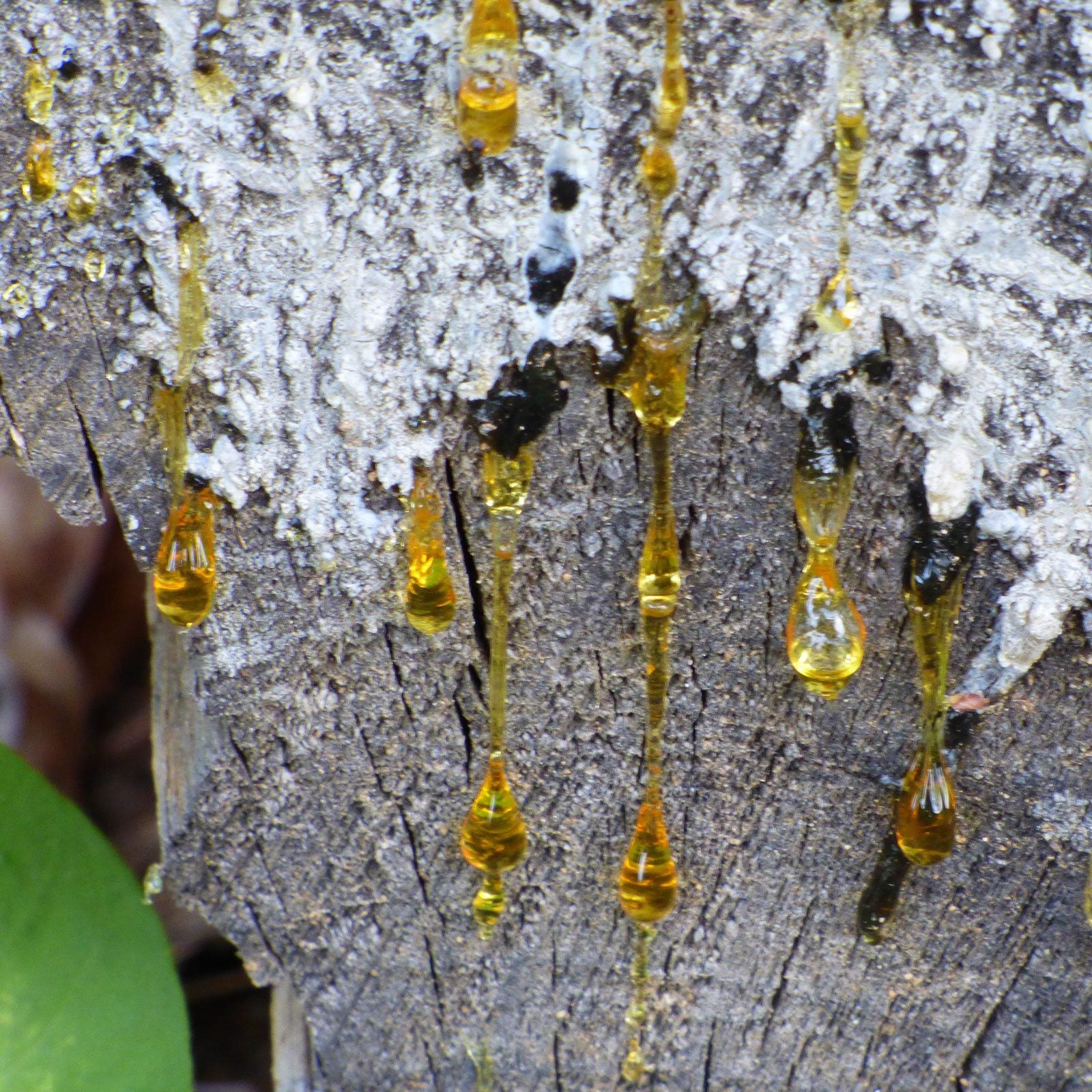Pine Tree Sap Season: Pine Tree Sap Uses And Information


Most trees produce sap, and pine is no exception. Pine trees are coniferous trees that have long needles. These resilient trees often live and thrive at elevations and in climates where other tree species cannot. Read on for more information about pine trees and sap.
Pine Trees and Sap
Sap is essential to a tree. Roots take up water and nutrients, and these need to be spread throughout the tree. Sap is a viscous liquid that carries nutrients throughout the tree to the areas where they are most needed. Tree leaves produce simple sugars that must get transported through the tree’s fibers. Sap also is the means of transportation for these sugars. Although many think of sap as a tree’s blood, it circulates through the tree much slower than blood circulates through the body. Sap is mostly made up of water, but the sugar compounds it carries make it rich and thick – and prevents freezing in cold weather. As to the sap in pines, there really is no pine tree sap season. Pine trees produce sap all year long but, during the winter, some of the sap leaves the branches and trunk.
Pine Tree Sap Uses
Pine tree sap is used by the tree to transport nutrients. Pine tree sap uses include glue, candles, and fire starting. Pine sap is also used for making turpentine, a flammable substance used for coating objects. If you use a knife to harvest sap, you’ll find that pine tree sap removal is not always easy. One way to attack pine tree sap removal from your knife is to soak a rag in Everclear (190 proof) and use it to wipe the blade. Find other tips for removing sap here.
Excessive Pine Tree Sap
Healthy pine trees drip a little sap, and it should not be a cause for concern if the bark looks healthy. However, sap loss can damage the tree. Excessive pine tree sap loss results from injuries like broken branches in a storm, or accidental cuts made by weed whackers. It can also result from borer insects who dig holes in the tree. If the sap is dripping from multiple holes in the trunk, it is likely borers. Talk with a county extension service office to find the right treatment. Excessive sap can also result from cankers, dead spots on your pine caused by fungi growing under the bark. Cankers can be sunken areas or cracks. There are no chemical treatments to control canker, but you can help the tree by pruning out affected branches if you catch it early.
Gardening tips, videos, info and more delivered right to your inbox!
Sign up for the Gardening Know How newsletter today and receive a free copy of our e-book "How to Grow Delicious Tomatoes".

Teo Spengler is a master gardener and a docent at the San Francisco Botanical Garden, where she hosts public tours. She has studied horticulture and written about nature, trees, plants, and gardening for more than two decades. Her extended family includes some 30 houseplants and hundreds of outdoor plants, including 250 trees, which are her main passion. Spengler currently splits her life between San Francisco and the French Basque Country, though she was raised in Alaska, giving her experience of gardening in a range of climates.
-
 Looking For Plants To Give You The Soft And Fuzzies? Try These 5 Fuzzy Leaf Plant Options
Looking For Plants To Give You The Soft And Fuzzies? Try These 5 Fuzzy Leaf Plant OptionsLovers of texture, drama, silver foliage and tactile plants will adore these special sensory garden additions. These fuzzy leaf plant options will leave you all aglow
By Susan Albert
-
 Get Ready For A Summer Of Hummers! Grow These Full Sun Hummingbird Plants and Flowers
Get Ready For A Summer Of Hummers! Grow These Full Sun Hummingbird Plants and FlowersIf you’re lucky enough to enjoy a sunny backyard, make sure you are maxing out on your pollinator opportunities and grow these full sun hummingbird plants and flowers
By Tonya Barnett